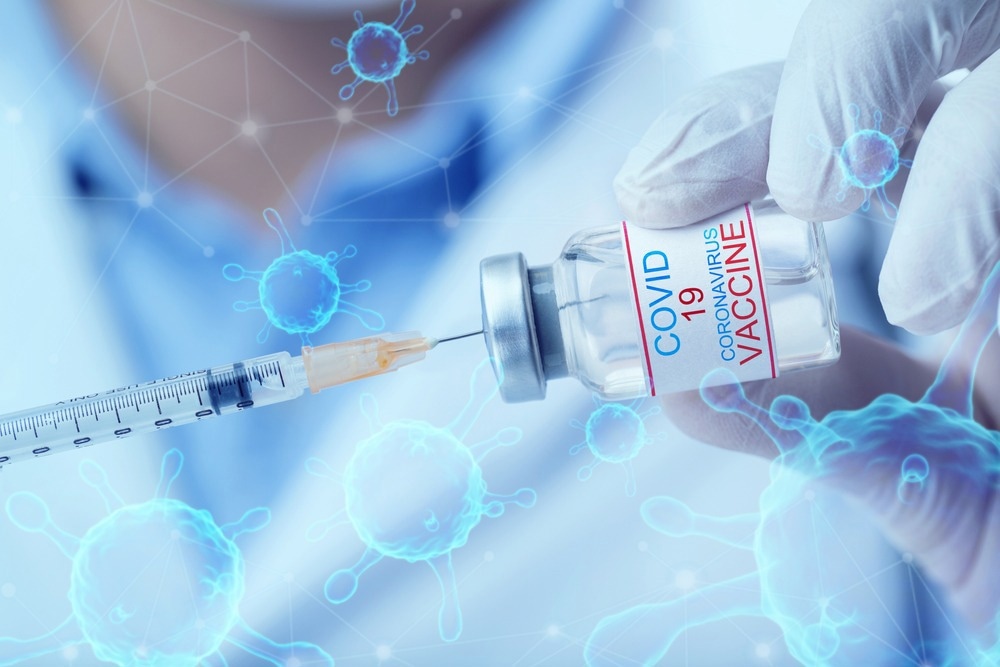In a recent study posted to the medRxiv* preprint server, an international team of researchers report that heterologous vaccination improves the neutralization of severe acute respiratory syndrome coronavirus 2 (SARS-CoV-2) Omicron sub-variants.

Study: Heterologous Inactivated Virus/MRNA Vaccination Response to BF.7, BQ.1.1, and XBB.1. Image Credit: chayanuphol / Shutterstock.com

 This news article was a review of a preliminary scientific report that had not undergone peer-review at the time of publication. Since its initial publication, the scientific report has now been peer reviewed and accepted for publication in a Scientific Journal. Links to the preliminary and peer-reviewed reports are available in the Sources section at the bottom of this article. View Sources
This news article was a review of a preliminary scientific report that had not undergone peer-review at the time of publication. Since its initial publication, the scientific report has now been peer reviewed and accepted for publication in a Scientific Journal. Links to the preliminary and peer-reviewed reports are available in the Sources section at the bottom of this article. View Sources
Omicron subvariant mutations
The emergence of highly evasive SARS-CoV-2 Omicron sub-variants has raised concerns about the effectiveness of monoclonal antibodies (mAbs) and current coronavirus disease 2019 (COVID-19) vaccines.
SARS-CoV-2 Omicron BA.4.6, BQ.1.1, BF.7, and XBB.1 subvariants harbor the R346T substitution in the spike protein, which allows these strains to escape from class III anti-spike mAbs. Conversely, the F486S substitution in the XBB.1.1 spike protein decreases binding to class I and II mAbs.
Bivalent booster vaccination and hybrid immunity may not be sufficient to protect against Omicron sub-variant infection. This may be due to humoral immune printing, by which initial exposure to the virus limits future responses against variants.
About the study
In the current study, researchers evaluate immune responses against emergent SARS-CoV-2 Omicron sub-variants. Individuals aged 18 or older who were immunized with inactivated or messenger ribonucleic acid (mRNA) COVID-19 vaccines were eligible.
A total of 67 adults were recruited, 64% of whom were females. Notably, 15 study participants reported vaccine breakthrough infections. 77 plasma samples were collected from these individuals within five months after receiving their most recent COVID-19 vaccine dose or when diagnosed with a breakthrough infection.
Samples from infection-naïve vaccinated healthy donors served as negative controls. Participants were stratified into recipients of the homologous booster with inactivated or mRNA vaccine, primary/booster series with inactivated vaccine followed by additional heterologous booster(s) with the mRNA vaccine, mRNA vaccines after SARS-CoV-2 infection, and those with a breakthrough infection when the BA.1 sub-variant was dominant circulating strain.
Enzyme-linked immunosorbent assay (ELISA) and pseudovirus neutralization assay were performed to measure binding and neutralizing antibody levels.
Study findings
The spike receptor-binding domain (RBD)-specific immunoglobulin G (IgG) levels and neutralizing activity were reduced against Omicron sub-variants relative to the G614 strain. Notably, the lowest antibody levels were observed against the XBB.1 sub-variant.
However, IgG levels and neutralizing titers were significantly higher in heterologous vaccination recipients than those who received three doses of the inactivated vaccine. Three-time inactivated vaccine recipients exhibited similar IgG and titer levels to those who received three mRNA vaccine doses and were diagnosed with a breakthrough infection.
Compared to those receiving three doses of the inactivated vaccine, the neutralizing titers of heterologous vaccination groups were up to 158- and 219-fold higher against the G614 strain and Omicron sub-variants, respectively.
The median neutralizing titers against XBB.1, BF.7, and BQ.1.1 were up to 148-fold lower than those against the G614 strain. However, heterologous vaccination groups had higher titers against these sub-variants than the homologous mRNA vaccination group. In contrast, individuals receiving three inactivated vaccine doses had titers below the detection limit against these sub-variants.
Conclusions
Taken together, the neutralizing activity induced by different vaccination regimens or after breakthrough infection was the lowest against SARS-CoV-2 Omicron XBB.1 and BQ.1.1 subvariants.
The current study findings suggest that heterologous mRNA vaccination as a first or second booster dose following primary/booster vaccination with an inactivated vaccine significantly augments neutralization of emergent SARS-CoV-2 Omicron sub-variants, including BF.7, BQ.1.1, and XBB.1. Thus, heterologous boosting should be considered for individuals who primarily received inactivated vaccines.

 This news article was a review of a preliminary scientific report that had not undergone peer-review at the time of publication. Since its initial publication, the scientific report has now been peer reviewed and accepted for publication in a Scientific Journal. Links to the preliminary and peer-reviewed reports are available in the Sources section at the bottom of this article. View Sources
This news article was a review of a preliminary scientific report that had not undergone peer-review at the time of publication. Since its initial publication, the scientific report has now been peer reviewed and accepted for publication in a Scientific Journal. Links to the preliminary and peer-reviewed reports are available in the Sources section at the bottom of this article. View Sources
Journal references:
- Preliminary scientific report.
Zuo, F., Sun, R., Abolhassani, H., et al. (2023). Heterologous Inactivated Virus/MRNA Vaccination Response to BF.7, BQ.1.1, and XBB.1. medRxiv. doi:10.1101/2023.02.02.23285205. https://www.medrxiv.org/content/10.1101/2023.02.02.23285205v1.full-text.
- Peer reviewed and published scientific report.
Zuo, Fanglei, Rui Sun, Hassan Abolhassani, Likun Du, Yating Wang, Stelios Vlachiotis, Federico Bertoglio, et al. 2023. “Heterologous Inactivated Virus/MRNA Vaccination Response to BF.7, BQ.1.1, and XBB.1” 33 (April): 100762–62. https://doi.org/10.1016/j.lanwpc.2023.100762. https://www.thelancet.com/journals/lanwpc/article/PIIS2666-6065(23)00080-9/fulltext.
Article Revisions
- May 17 2023 - The preprint preliminary research paper that this article was based upon was accepted for publication in a peer-reviewed Scientific Journal. This article was edited accordingly to include a link to the final peer-reviewed paper, now shown in the sources section.